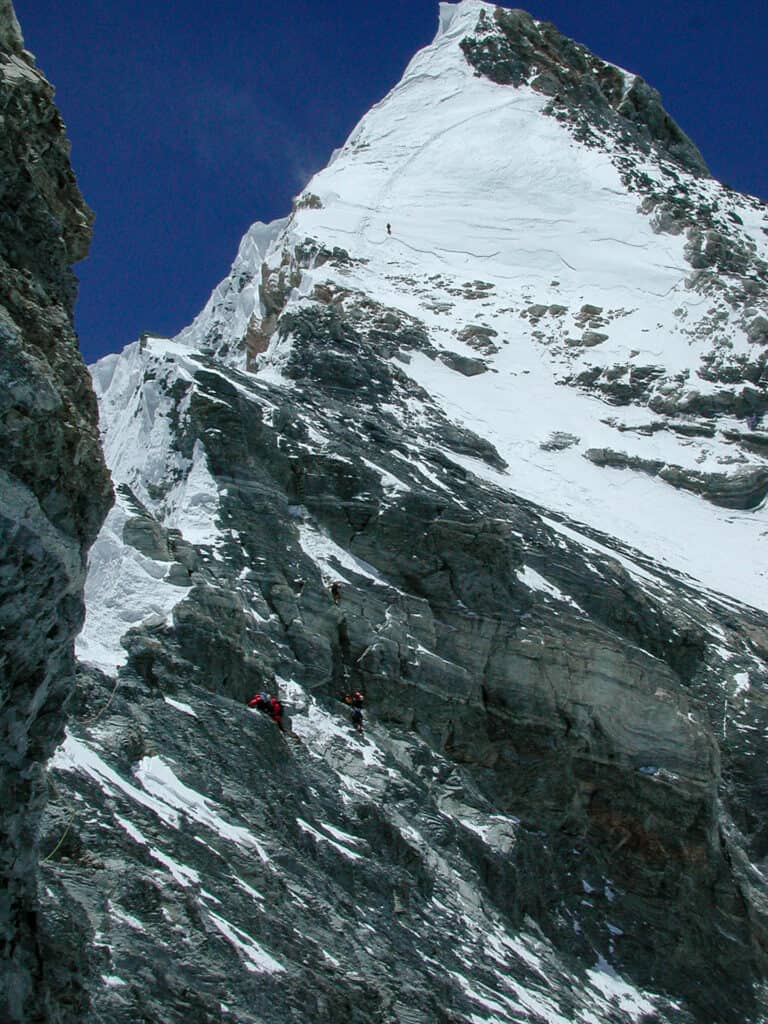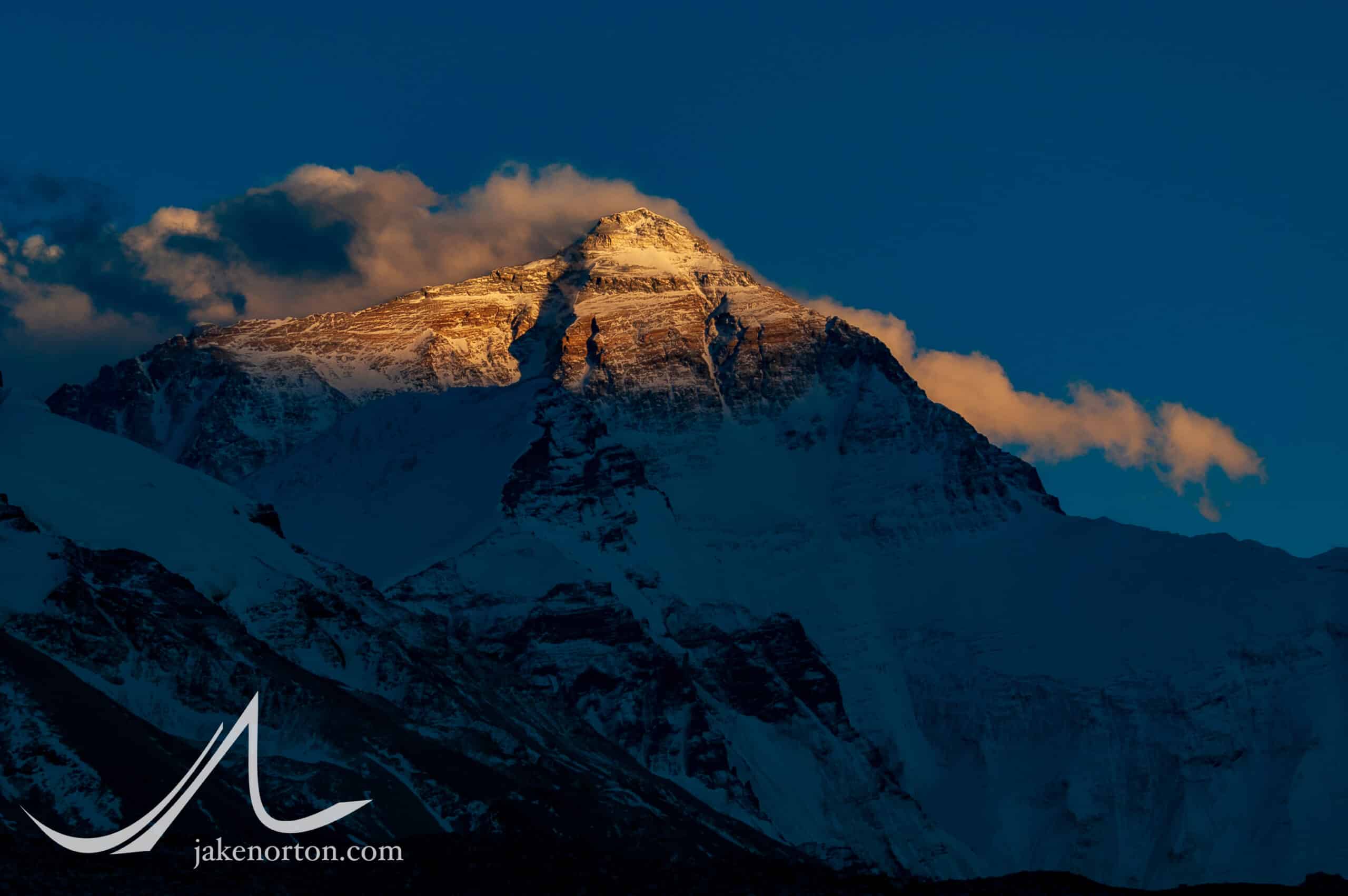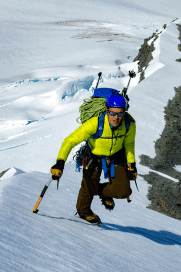Courage is not the absence of fear, but rather the judgment that something else is more important than fear.
- Ambrose Redmoon1 -
__
The fierce winds that had throttled camp for nine days were finally subsiding. Cramped in tiny tents at 25,500 feet, the climbers were within striking distance of the summit of K2, the world’s second highest peak - as yet unclimbed.

But on that morning - August 11, 1953 - the summit was far from their minds. Their teammate, Art Gilkey, had thrombophlebitis - blood clots - in both legs. Descent was imperative, but Art couldn’t stand, let alone walk, so a rescue was an equal imperative.
The catch was it would be dangerous. Exquisitely, exceptionally dangerous. But, they knew they had to try. As team leader Dr. Charlie Houston would tell me sixty years later: “None of us, not a single one, could have left Art there on that mountain. We were a team, we did this together or we didn’t do it at all.”
And so began one of the most heroic and horrific rescues in climbing history: The team was battered by avalanches descending an unknown route, a fall nearly killed them all but for a dramatic arrest by Pete Schoening (known in climbing lore simply as “The Belay”), and eventually they made it to Camp VII, only to have Gilkey either swept away by an avalanche or - as Houston, Bob Craig, Bob Bates, and Dee Molenaar debated at Charlie’s 90th birthday celebration - cut himself free so as to not endanger the team further.

Gilkey tragically died on the expedition, but the salient and inspirational point of it all is that the team tried - tried to save him, refused to sacrifice another human for the summit, which could easily have been theirs. Theirs was a true and beautiful embodiment of the brotherhood of the rope, the foundational climbing ethic that once pervaded the discipline, a concept of sticking together, helping one another no matter what, and putting the summit a distant second (or third) to making wise, ethical decisions.
Fast forward 70 years, and Houston and his teammate’s efforts and ethics are not even a memory, a whisper on K2. As widely reported, in the early morning hours of July 27, 2023, climbers began stepping over and around Mohammad Hassan, a Pakistani high-altitude porter who had fallen in one of the most dangerous sections of the mountain and was barely clinging to life. 102 people would jubilantly summit the mountain that day, returning later to celebrations at basecamp and beyond.
Mohammad would not: he died there on the mountain, leaving behind his wife, three sons, and his diabetic mother.2
Solidarity has given way to selfishness.
- Reinhold Messner
in Krone Magazine (translation by Google) -
Much has been written about this latest climbing tragedy, much blame cast and fingers pointed. I was not there, I have not climbed K2, so I can’t point fingers or speak directly to the terrain in question. But one of the best, Reinhold Messner, said of the tragedy in WELT:
Here egoism triumphed and empathy died. If an accident happened in the past, everyone broke off and tried to come to the rescue.
- Reinhold Messner, WELT Magazine (translation by Google)
Overall, I’d like to contest the notions - cynical, dismissive ones - that nothing could be done, that a rescue is impossible at that altitude on that mountain, that Mohammad should not have been there in the first place and thus it was no one else’s responsibility but his and the company who hired him, etc.
On my second Everest expedition, 2001, my teammates Dave Hahn, Tap Richards, Jason Tanguay, and Phu Dorje Sherpa were up near the Third Step on the Northeast Ridge (about equal to the summit of K2). At the Third Step, they came upon two climbers, American guide Andy Lapkass and his Guatemalan client, Jaime Vinals. Both had reached the top the night before, but Vinals was exhausted, losing his sight from cerebral edema, and could not continue; Lapkass, a consummate guide, refused to leave, and spent the night with Jaime. By morning, both were exhausted, frostbitten, struggling to stand or walk…and had roughly a linear mile of horribly steep, exposed, dangerous climbing to reach the safety of Camp VI.

By all estimates, a rescue was impossible. Dave Hahn wrote that Andy and Jaime were, tragically, dead men.
Until they weren’t. Until the selfless actions of Dave, Tap, Jason, and Phu Dorje - later assisted by Phurba Sherpa and Andy Politz - roused them from the despair-induced certainty of their own impending demise, ushering in a sprinkling of hope, of humanity, which unlocked stores of energy and frozen joints. Hours later, six rescuers had saved Andy and Jaime plus two Russian climbers from places and predicaments many would say were hopeless, impossible. As Dave Hahn put it so well, that day they did something “far more important to all of us than any summit could ever have been.”
Five years later, two horribly similar situations occurred on that same route. First, English climber David Sharp was left for dead on the summit ridge below the First Step. Accounts differ as to who did what and if David could have been helped, but the facts remain that he was alive in the dark morning when climbers began their ascent, and still alive hours later when he was passed a second time, sitting half frozen and catatonic next to the remains of Tsewang Paljor.
Ten days later, Australian Lincoln Hall was pronounced dead near the Third Step after reaching the summit and ceasing communications with his teammates by radio.
The following morning, guide Dan Mazur was leading his clients to the top when they found a man sitting cross-legged, partially undressed, just below the Third Step. He saw them and said wryly: “'I imagine you're surprised to see me here.”
It was Lincoln Hall, still quite alive. Mazur and his clients abandoned their climb and, with the assistance of many Sherpa from camps below, managed to get Lincoln down off the mountain and, eventually, home to his wife and family.

I could go on with examples, from “dead” people I and others have helped rescue on Everest and in the Andes and elsewhere. Examples of people like Mohammad who, by chance or fault, ended up on death’s door and were pulled from the brink. People who may easily have been left for dead, deemed beyond help, the patch of snow on top put before the shared humanity connecting one climber to the next.
I can’t help but wonder what the outcome might have been on July 27 if someone, anyone, had made a different choice, had shouted the alarm and organized a rescue attempt. Or simply held Mohammad's hand, offering a bit of comfort until the end.
The point is: there is always a chance.
There is always hope, opportunity.
There is always a possibility that the dead guy under your feet may just need a helping hand, a dash of empathy and a touch of humanity, to rise like a phoenix and live to see another day.
And that knowledge, that hope, that possible, beautiful eventuality is worth far more than any summit or any record.
- This of-referenced quote is a snippet of a longer, powerful passage by James Neil Hollingworth (AKA Ambrose Redmoon) that reads: Cowardice is a serious vice. Courage is not the absence of fear, but rather the judgment that something else is more important than one's fear. The timid presume it is lack of fear that allows the brave to act when the timid do not. But to take action when one is not afraid is easy. To refrain when afraid is also easy. To take action regardless of fear is brave. ↩︎
- K2 climber Wilhelm Steindl has created a GoFundMe for Mohammad's family. Please donate here. ↩︎


